NIL
The lone remaining SEC program without an indoor facility is set to add one
A season of adversity was the storyline for Jeff Lebby’s first season as the head coach in Starkville, and thanks to a special announcement today, the Mississippi State program is the target of some welcome good news. Mississippi State, the only remaining SEC program without an indoor training facility, is set to get one thanks […]

A season of adversity was the storyline for Jeff Lebby’s first season as the head coach in Starkville, and thanks to a special announcement today, the Mississippi State program is the target of some welcome good news.
Mississippi State, the only remaining SEC program without an indoor training facility, is set to get one thanks to a “trailblazing gift” from Howard Industries.
The new indoor, which will be named in honor of multi-sport alumnus Billy W. Howard, will provide 110,000 square feet of training space for year round development for Bulldogs athletes and will be integrated seamlessly into the daily operations of the adjacently located Leo Seal Jr. Football Complex when the project is finished.
Set to cost $60 million in total, the new project will include new areas to address sports science, and advanced recovery stations in addition to other enhanced support spaces.
Currently, architects and facility planners are completing design concepts and the project is expected to break ground in 2027.
If all goes according to plan, the indoor should open in the summer of 2008, while renovations to the current student athlete spaces at the football complex will then pick up before finishing touches in 2029. Mississippi State’s Bulldog Club is continuing to fundraise to secure full funding for the project.
Head coach Jeff Lebby provided the following statement on the news in the school’s release.
“Words cannot truly express how incredibly grateful we are to Howard Industries and the entire Howard family for making this vision a reality. This new indoor facility will allow us to train more effectively as we compete against the best in the country week in and week out. The development of players, the injury prevention, and recovery components and the ability to prepare for Saturdays regardless of the elements outdoors is going to have tremendous impacts on our program. We are grateful for the investment in Mississippi State football and are working tirelessly to make all Bulldog fans proud.”
The school shared the following video highlighting the Howard family and their story to honor the family that has made this project possible.
NIL
Strange revenue-sharing setup for Florida’s chief rival draws Urban Meyer’s concern
Former Florida Gator coach Urban Meyer never had to deal with the NIL Era and was able to leverage things like getting players to the NFL when recruiting players. Since stepping away from coaching for good, money has turned into the name of game in recruiting. And while Florida’s NIL situation doesn’t quite match what […]

Former Florida Gator coach Urban Meyer never had to deal with the NIL Era and was able to leverage things like getting players to the NFL when recruiting players. Since stepping away from coaching for good, money has turned into the name of game in recruiting.
And while Florida’s NIL situation doesn’t quite match what some of the big boys are able to do, including Meyer’s last school at Ohio State, it’s still way better than what FSU might be trying to get away with.
Urban Meyer calls out FSU for their revenue-sharing situation
With revenue sharing now the way of the land, schools are having to figure out how to distribute the extra money to players. CBS Sports ran a story last week highlighting FSU’s plan, and there are some doozies in it.
According to CBS:
“One clause, which CBS Sports has seen a copy of, allows the team to extend a player at the end of their contract unilaterally without having to negotiate with the player. Another section on team rules — common in most NIL or rev share deals — includes a maximum $2,500 fine on the first offense if a player loses team equipment such as a pair of cleats. The max fine for using a controlled substance for the first time is $1,000.
There’s another clause about things that would constitute a breach of contract. Among them is “illness or injury which is serious enough to affect the value of rights granted to the school.” The way it’s written allows Florida State to renegotiate or even cancel a player’s contract at its discretion after any sort of injury — among other potential liquidated damages provisions included as part of the contract — including those that happen on the football field.”
Appearing on The Triple Option, Meyer made the point that if this is actually the path the Seminoles try to take, they will never be heard from again in college football:
“I’ll make this statement if this is legit, this goes through, which I’m so skeptical, then the days of Florida State are numbered. It won’t happen. It won’t happen. It can’t happen. No chance.”
The flaw in FSU’s plan is that no five or four-star prospect is going to want to wind up in Tallahassee, knowing they have no bargaining power if they were to outperform their initial deal.
Combined with zero protections if a player gets injured, word will leak very quickly to look elsewhere.
NIL
ACC year-by-year exit fees revealed after Florida State, Clemson settlement
Terms of the settlement between Florida State, Clemson and the ACC show the conference’s year-by-year exit fees. The figures show the amount schools would have to pay if they want to leave, according to On3’s Brett McMurphy. If a school were to leave the ACC in 2025-26, it would owe $165 million. That number drops […]

Terms of the settlement between Florida State, Clemson and the ACC show the conference’s year-by-year exit fees. The figures show the amount schools would have to pay if they want to leave, according to On3’s Brett McMurphy.
If a school were to leave the ACC in 2025-26, it would owe $165 million. That number drops to $147 million in 2026-27, $129 million in 2027-28 and $111 million in 2028-29. After it hits $93 million in 2029-30, schools would owe a $75 million exit fee from 2030-2036.
Florida State, Clemson and the ACC all approved the settlement in March after the two schools filed lawsuits regarding the conference’s grant of rights. FSU’s suit centered on the grant of rights, while Clemson sought to clarify language about whether the university controls its broadcast rights.
The exit fees line up with the proposal approved by the schools, which also included a new revenue distribution model based on a rolling average of TV ratings. The proposal also said schools would keep their media rights after paying the exit fees.
Under the new revenue model, a majority share – 60% – of the base media rights will be placed into a viewership pool to be distributed via a TV ratings-based model, the settlement terms said. It will take effect this year.
When it approved the settlement, Clemson projected the “opportunity” for more than $120 million in new revenue over the next six years in its board meeting. It includes the “viewership pool,” as well as enhanced ACC “success initiatives.”
Florida State trustee Drew Weatherford also said praised the way things “drastically changed” after he and others made it clear the school was willing to leave the ACC. He called the settlements a win for all sides.
“I’m proud of where we’ve where we’ve landed,” Weatherford said. “We made some commitments 14 months ago that we would do everything in our power to ensure that we could compete at the highest level. I think we’ve done that here. We also made it clear that we were willing to seek a new home if something drastically didn’t change.
“But the good news is that things have drastically changed since we had that conversation – for our benefit – and there’s been a lot of work done. … So I just want Seminole nation to know that the future is bright. I am extremely encouraged and I’m confident that we will remain one of the top athletic brands in the country for decades to come, and I wasn’t that confident 14 months ago. So I just commend the entire board, the entire organization, for getting to where we are today. Net and net, I think it’s a really great outcome for everybody involved.”
NIL
Tennessee Unveils New Smokey Grey CFB Uniforms to Honor Armed Forces in Photos, Video
The Tennessee football team will be donning a new look during the 2025 season. On Thursday, the Vols revealed that their crop of uniform combinations will include a Smokey Grey edition in honor of the United States Armed Forces. The university unveiled the new look in a series of photos and videos: Tennessee originally launched […]

The Tennessee football team will be donning a new look during the 2025 season.
On Thursday, the Vols revealed that their crop of uniform combinations will include a Smokey Grey edition in honor of the United States Armed Forces. The university unveiled the new look in a series of photos and videos:
Tennessee originally launched the Smokey Grey series in 2022. According to a release, “The Volunteer Spirit” is the fourth edition in the series and the first to pay homage to the U.S. Armed Forces. The 2023 edition was “a tribute to legendary VFL Condredge Holloway, the first Black player to start at quarterback for an SEC program.” The uniforms the Vols wore in the 2024 opener were “an ode to the state and Tennessee’s status as the flagship university with the Tri-Star state emblem serving as the centerpiece.”
Tennessee will wear this year’s Smokey Grey uniforms on Nov. 15 in a home matchup against New Mexico State for the annual Salute to Service game, which honors U.S. service members, veterans and their families. The game, which is also the Vols’ Homecoming event, will be played four days after Veterans Day.
In 2024, Tennessee finished with a 10-3 record after earning a berth in the College Football Playoff. The Vols lost their first-round matchup 42-17 to Ohio State, which went on to win the national championship.
This year’s Tennessee squad will look a little different in its fifth year under head coach Josh Heupel. The highly publicized departure of quarterback Nico Iamaleava put the Vols under the spotlight this offseason. UCLA transfer quarterback Joey Aguilar is expected to take the reins when Tennessee opens the 2025 campaign on Aug. 30 against Syracuse.
NIL
Reece Potter admits he did not believe Kentucky was reaching out to him
A lot of kids in the bluegrass who play basketball go on to dream of getting to play for Kentucky. When that moment came for Miami (OH) C Reece Potter in the NCAA Transfer Portal, though, he couldn’t believe it had happened for him. Potter discussed his portal recruitment, and the eventual involvement in it […]

A lot of kids in the bluegrass who play basketball go on to dream of getting to play for Kentucky. When that moment came for Miami (OH) C Reece Potter in the NCAA Transfer Portal, though, he couldn’t believe it had happened for him.
Potter discussed his portal recruitment, and the eventual involvement in it from UK, while speaking to the media on Monday. He said he and his family initially didn’t think it was true when the Wildcats reached out, among other college programs, in the spring.
“It was kind of wild. So, you know, Coach Fueger messaged me and, when he reached out, I thought, like, I didn’t believe, like, Kentucky reached out to me,” Potter recalled. “I was like, this is kind of – I showed my dad. I was actually in Lexington. So, you know, I was like, dad, I think Kentucky just reached out to me? And he was like, nah, you’re lying, you know. You know, you have all the coaches that reach out to you once you hit the portal.”
However, if that wasn’t enough for the Potters, they must have realized how true it was when Mark Pope called in for him on a FaceTime. That’s when the unbelievable became believable for the in-state transfer.
“And then, I told them I was interested. And Coach Pope actually FaceTimed me. I was like, oh my. Like, Coach Pope is FaceTiming me. So, it was surreal,” said Potter. “I was very blessed to have that (happen).”
Potter, a Lexington native who played his high school basketball at Lexington Catholic less than 15 minutes off campus, would get mid-major interest in his recruitment, beginning his collegiate career by committing to Miami (OH). He appeared in 56 games, mostly as a reserve big, through two seasons with the Redhawks while averaging 6.3 points (45.4% FG, 39.8% 3PT), 3.4 rebounds, and 1.1 assists.
Potter would go on to enter his name into the portal at the opening of the window in March. Then, after hearing from several programs, including the reported likes of even North Carolina, UConn, and Louisville, Potter would commit to Kentucky on April 5th after what was an under-the-radar recruitment by UK. That would make him one of six transfers, making up the No. 2 portal class per On3, incoming for the Wildcats going into a much-anticipated year two for Pope.
Potter is getting to live the dream, his own dream, now of an in-state player like himself after the Wildcats came calling. That’ll only get more real for him through this summer and fall going into his debut with the program in Rupp Arena come November.
NIL
Jeremiah Smith Flaunts $4.2 Million Lavish Lifestyle After Signing Recent NIL Deal
Jeremiah Smith Flaunts $4.2 Million Lavish Lifestyle After Signing Recent NIL Deal originally appeared on Athlon Sports. Regardless of position or age, many around college football would argue that Ohio State’s true sophomore wide receiver, Jeremiah Smith, is the best player in the sport. Advertisement The former No. 1 overall recruit in the class of […]
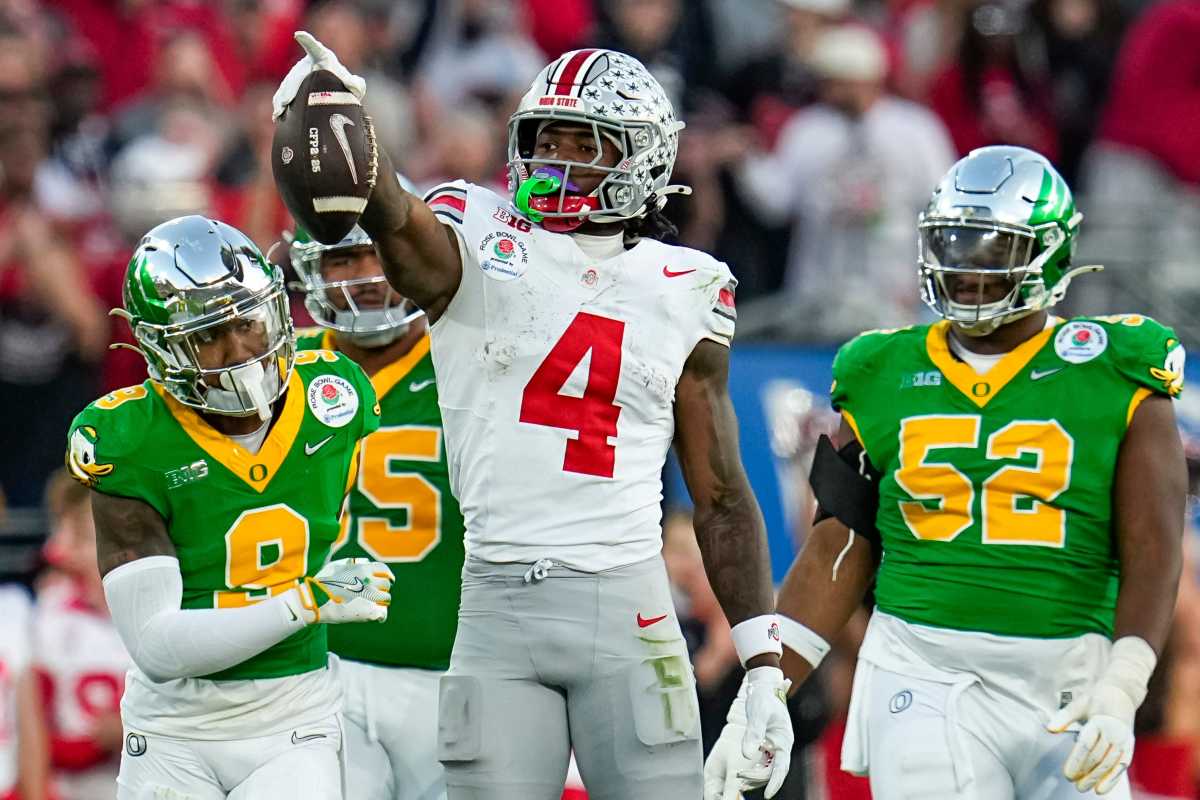
Jeremiah Smith Flaunts $4.2 Million Lavish Lifestyle After Signing Recent NIL Deal originally appeared on Athlon Sports.
Regardless of position or age, many around college football would argue that Ohio State’s true sophomore wide receiver, Jeremiah Smith, is the best player in the sport.
Advertisement
The former No. 1 overall recruit in the class of 2024 more than lived up to the billing, as he played a key role in the Buckeyes winning the first-ever 12-team College Football Playoff.
He finished the season with 76 catches for 1,315 yards and 15 touchdowns, while averaging 17.3 yards per catch. He was also named a first-team All-American, Big Ten Freshman of the Year, Rose Bowl MVP and Big Ten Receiver of the Year.
His strong season also presumably led to him receiving a substantial amount of money in the NIL department. According to On3, Smith possesses an NIL Valuation of $4.2 million and has inked deals with brands such as Nintendo, Red Bull, Lululemon and most recently Adidas, which was announced on Wednesday.
After becoming a three-stripe athlete on Wednesday, Smith took to Instagram on Thursday to do a bit of flexing.
Advertisement
NIL
SARS Impact on DoD 'Almost Nil' So Far, Senior Health Official Says
So far, the mysterious respiratory illness that’s killed almost 400 people worldwide has had a negligible effect on the U.S. military, DoD’s top civilian health official said April 29. Dr. William Winkenwerder Jr., assistant secretary of defense for health affairs, characterized the severe acute respiratory syndrome’s impact on DoD health care beneficiaries as “almost nil.” […]
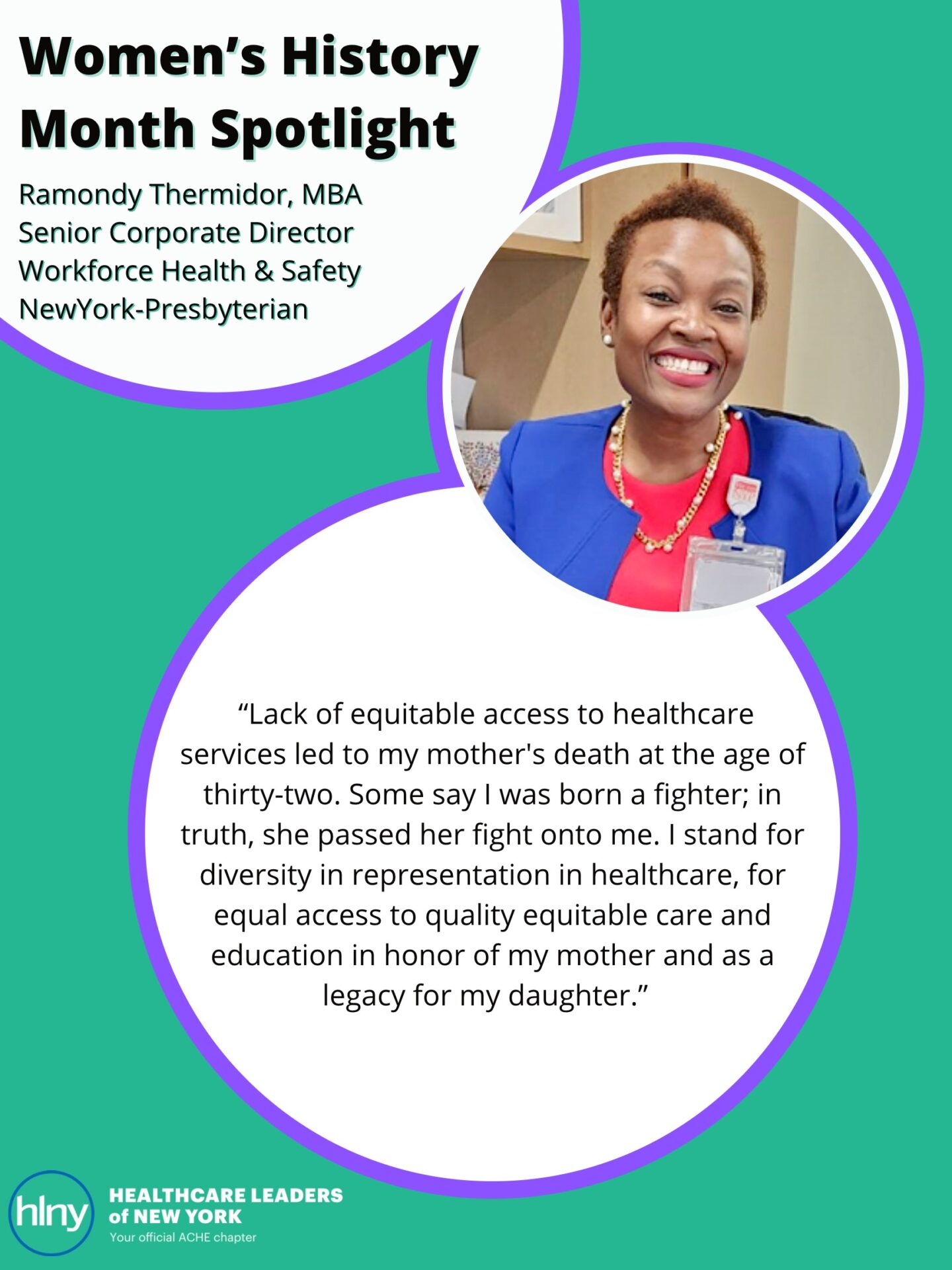

So far, the mysterious respiratory illness that’s killed almost 400 people worldwide has had a negligible effect on the U.S. military, DoD’s top civilian health official said April 29.
Dr. William Winkenwerder Jr., assistant secretary of defense for health affairs, characterized the severe acute respiratory syndrome’s impact on DoD health care beneficiaries as “almost nil.” He cited just one possible case involving a retiree at Hill Air Force Base, Utah.
“I don’t want to give a great deal of credence to this report yet, because it’s still being evaluated,” Winkenwerder cautioned reporters during his meeting with them at the Pentagon.
The individual who has recovered had reportedly traveled to Asia, Winkenwerder pointed out, where most SARS cases have been reported. He added that to the best of his knowledge, no one in close contact with that individual came down with the disease.
According to the Centers for Disease Control and Prevention in Atlanta, SARS begins with a fever greater than 100.4 degrees Fahrenheit. The fever is sometimes associated with chills or other symptoms, including headache, general feeling of discomfort and body aches. Some people diagnosed with SARS may experience mild respiratory problems, the CDC said, noting that after two to seven days, some patients may develop a dry cough and have trouble breathing.
The CDC also reports that SARS appears to spread by close person-to- person contact, such as when an infected person sneezes on or near another, uninfected person.
Medical researchers believe that the corona virus causes SARS, Winkenwerder remarked.
“That is the same family of viruses that causes the common cold,” he pointed out, adding there is a diagnostic test being developed to detect the disease.
SARS is “a disease about which we’re still learning” more about every day, Winkenwerder emphasized, noting that DoD is working closely with CDC and the World Health Organization.
According to CDC documents, as of April 28, there are 52 reported probable cases of SARS within the United States, including two in Hawaii. Thus far, there have been no deaths in the U.S. attributed to SARS.
As of April 30, according to WHO, the total number of SARS cases reported worldwide was 5,663, a number that includes 372 deaths.
CDC Director Dr. Julie L. Gerberding noted at an April 24 briefing that the SARS “is an atypical pneumonia” with a death rate “running between 5.9 and 6 percent.” She praised the “incredible” collaboration between her organization and WHO.
DoD has “people who are in daily contact with the experts around the world on this disease,” Winkenwerder pointed out, noting senior DoD leaders are receiving daily reports on the SARS situation.
DoD’s Global Emerging Infection Surveillance organization has been actively searching for possible SARS cases, Winkenwerder noted.
Also, he continued, researchers at the U.S. Army Medical Research Institute for Infectious Diseases at Fort Detrick, Md., are currently involved in testing anti-viral agents that might be effective against SARS.
DoD is endeavoring “to be as supportive as we can to the U.S. civilian health authorities and others around the world,” Winkenwerder asserted. He added that DoD has issued health affairs guidance about SARS to the Joint Chiefs of Staff and military commanders worldwide. That guidance, he added, is slated for updates.
The Defense Department recently directed that its military and civilian personnel make only mission-essential trips to China and Hong Kong.
SARS was first diagnosed in rural China last November and then spread to Hong Kong. More than 25 countries have reported cases.
Story by Gerry J. Gilmore, American Forces Press Service
| Date Taken: | 05.02.2003 |
| Date Posted: | 07.04.2025 01:39 |
| Story ID: | 532534 |
| Location: | WASHINGTON, US |
| Web Views: | 0 |
| Downloads: | 0 |
PUBLIC DOMAIN

This work, SARS Impact on DoD ‘Almost Nil’ So Far, Senior Health Official Says, must comply with the restrictions shown on https://www.dvidshub.net/about/copyright.
-

 Social Media3 weeks ago
Social Media3 weeks agoPune Athletes Make Global Mark at IRONMAN Hamburg and Brazil 2025
-
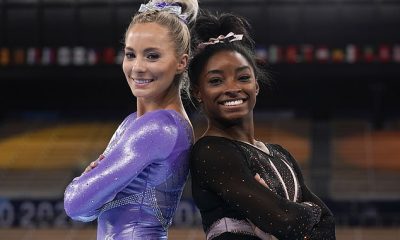
 Health3 weeks ago
Health3 weeks agoGymnast MyKayla Skinner Claims Simone Biles 'Belittled and Ostracized' Her amid Riley …
-
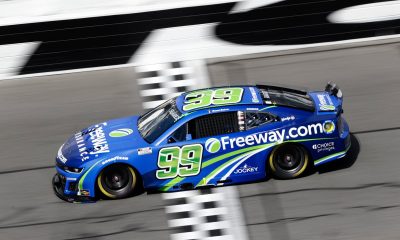
 Motorsports3 weeks ago
Motorsports3 weeks agoNASCAR Race Today: Mexico City start times, schedule and how to watch live on TV
-

 Motorsports3 weeks ago
Motorsports3 weeks agoNASCAR in Mexico City: Where to watch, start time, stream, lineup, race preview for inaugural Viva Mexico 250
-
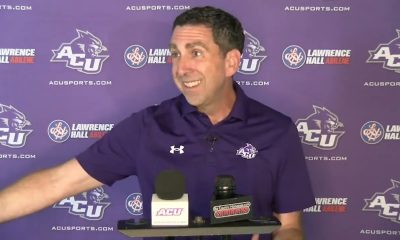
 College Sports1 week ago
College Sports1 week agoWAC to Rebrand to UAC, Add Five New Members in 2026
-

 High School Sports3 weeks ago
High School Sports3 weeks agoNew Bedford top stories
-
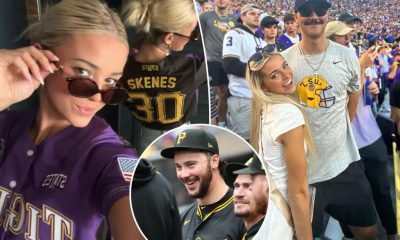
 College Sports3 weeks ago
College Sports3 weeks agoLivvy Dunne honors boyfriend Paul Skenes with twist on LSU jersey
-

 Health3 weeks ago
Health3 weeks agoChicago Sky receive unfortunate reaction to 'mental health' statement with Angel Reese
-

 Health3 weeks ago
Health3 weeks agoKyrie Irving's Strong Message Amid Men's Mental Health Awareness Month
-
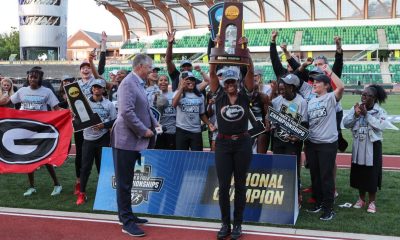
 Sports3 weeks ago
Sports3 weeks agoGeorgia women soar to first outdoor track championship





































